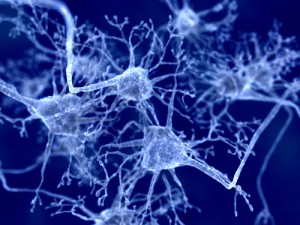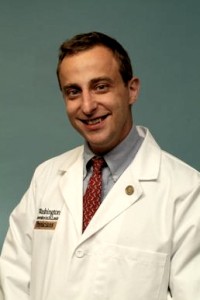Major Study Finds Different Forms Of Alzheimer’s Have Similar Effects On Brain Networks

 A major new study by an international team of scientists anchored at Washington University School of Medicine in St. Louis, has revealed that brain networks break down similarly in both rare, inherited forms of Alzheimer’s disease, and in much more common uninherited versions of the disorder. In both types of Alzheimer’s, a basic brain function component starts to decline about five years before onset of symptoms, such as memory loss, becomes obvious.
A major new study by an international team of scientists anchored at Washington University School of Medicine in St. Louis, has revealed that brain networks break down similarly in both rare, inherited forms of Alzheimer’s disease, and in much more common uninherited versions of the disorder. In both types of Alzheimer’s, a basic brain function component starts to decline about five years before onset of symptoms, such as memory loss, becomes obvious.
The researchers say breakdown occurs in resting state functional connectivity, which involves groups of brain regions with activity levels that rise and fall in coordination with each other, and believe this synchronization helps the regions form networks that work together or stay out of each others way during mental tasks.
The original investigation report, published online before print in the journal JAMA Neurology entitled “Functional Connectivity in Autosomal Dominant and Late-Onset Alzheimer Disease” (JAMA Neurol. Published online July 28, 2014. doi:10.1001/jamaneurol.2014.1654 — for lists of the coauthors and associated institutions, see editor’s note below).
The coauthors note that Autosomal dominant Alzheimer disease (ADAD) is caused by rare genetic mutations in three specific genes, in contrast to late-onset Alzheimer disease (LOAD), which has a more polygenetic risk profile. Their research objective was to assess the similarities and differences in functional connectivity changes owing to ADAD and LOAD.
The researchers analyzed functional connectivity in multiple brain resting state networks (RSNs) in a cross-sectional cohort of participants with ADAD (n=79) and LOAD (n=444), using resting-state functional connectivity magnetic resonance imaging at multiple international academic sites.
For both types of AD, the researchers quantified and compared functional connectivity changes in RSNs as a function of dementia severity measured by the Clinical Dementia Rating Scale. In ADAD, they qualitatively investigated functional connectivity changes with respect to estimated years from onset of symptoms within 5 RSNs.
[adrotate group=”3″]
The coauthors report that decreases observed in functional connectivity with increasing Clinical Dementia Rating scores were similar for both LOAD and ADAD in multiple RSNs. Ordinal logistic regression models constructed in one type of Alzheimer’s disease accurately predicted clinical dementia rating scores in the other, further demonstrating the similarity of functional connectivity loss in each disease type. Among participants with ADAD, functional connectivity in multiple RSNs appeared qualitatively lower in asymptomatic mutation carriers near their anticipated age of symptom onset compared with asymptomatic mutation noncarriers.
The researchers conclude that resting-state functional connectivity magnetic resonance imaging changes with progressing AD severity are similar between ADAD and LOAD, suggesting that resting-state functional connectivity magnetic resonance imaging may be a useful end point for LOAD and ADAD therapy trials. Moreover, they speculate that the disease process of ADAD may be an effective model for the LOAD disease process.
 “The brain networks affected by inherited Alzheimer’s disease in a 30-year-old are very similar to the networks affected by uninherited Alzheimer’s disease in a 60-, 70- or 80-year-old,” says study senior author Beau Ances, MD, PhD in a Washington University release. “This affirms that what we learn by studying inherited Alzheimer’s, which appears at younger ages, will help us better understand and treat more common forms of the disease.”
“The brain networks affected by inherited Alzheimer’s disease in a 30-year-old are very similar to the networks affected by uninherited Alzheimer’s disease in a 60-, 70- or 80-year-old,” says study senior author Beau Ances, MD, PhD in a Washington University release. “This affirms that what we learn by studying inherited Alzheimer’s, which appears at younger ages, will help us better understand and treat more common forms of the disease.”
According to Dr. Ances, an associate professor of neurology At WUStL, one of the leading medical research, teaching and patient-care institutions in America, currently ranked sixth in the nation by U.S. News & World Report, the study results show that functional connectivity may help scientists monitor the effects of treatment as patients progress through the transition between early disease and the first appearance of obvious symptoms.
“Right now, this period when functional connectivity begins breaking down is a time when family and loved ones may start noticing little changes in personality or mental function in someone with the disease, but not significant enough changes to cause real alarm,” Dr. Ances observes. “The hope is that one day treatment already will be well underway before these sorts of changes begin we want to slow or stop the damage caused by Alzheimer’s years earlier.”
Inherited Alzheimer’s disease can strike early in life, causing symptoms in patients as young as their 30s or 40s. Identifying the mutations that cause these forms of the disease has helped scientists find proteins that become problematic in more common forms of Alzheimer’s, which typically appear decades later.
Researchers have long assumed that additional connections exist between inherited and uninherited Alzheimer’s disease, but until recently they have not had sufficient data to directly test many of those connections. Challenges have included the small number of people with inherited Alzheimer’s, and the slow development of both forms of the disease.
Scientists at the Charles F. and Joanne Knight Alzheimer’s Disease Research Center at Washington University began to tackle the first challenge five years ago by organizing the Dominantly Inherited Alzheimer’s Network (DIAN), an international network for identifying and studying families with inherited forms of the disease. The network now includes nearly 400 families.
To address the second challenge, Washington University researchers at the center have been gathering extensive health data on seniors through long-term projects such as the Healthy Aging and Senile Dementia Study, which is entering its 31st year.
These pools of data allowed Dr. Ances to compare the effects of inherited and uninherited Alzheimer’s on functional connectivity. Scientists assess functional connectivity by scanning the brains of research participants while they daydream.
“The question was, where does the decline of functional connectivity fit in the whole picture of the development of Alzheimer’s disease?” Dr. Ances says. “And it clearly does have a place in the middle stages of the disease.”
That’s not the best place to look for an initial diagnosis, according to Dr. Ances, since ideally, scientists want to start treating Alzheimer’s disease as soon as possible.
“What this does tell us, though, is that functional connectivity may help us track the progression of Alzheimer’s in patients who are first diagnosed when they’re beginning to show early signs of dementia,” he says.
Dr. Ances is member of the American Academy of Neurology, Society of Neuroscience, International Society for NeuroVirology, Society of Cerebral Blood Flow and Metabolism, International Society for Magnetic Resonance Imaging, and Human Brain Mapping Society. He serves as peer reviewer for journals including Lancet Neurology, Brain, Journal of Neuroscience, Neurology, Annals of Neurology, Archives of Neurology, NeuroImage, Human Brian Mapping, and Journal of Cerebral Blood Flow and Metabolism.
Currently, Dr. Ances is an Associate Professor in the Department of Neurology and Neurosciences at Washington University in St. Louis. He is certified by the American Board of Psychiatry and Neurology in Adult Neurology. Dr. Ances is an active member of multicenter NeuroAIDS organizations such as the Neurologic AIDS Research Consortium (NARC), the AIDS Clinical Trials Group (ACTG), and the CNS HIV Antiretroviral Therapy Effects Research (CHARTER), and Alzheimer’s Disease Research Center (ADRC), as well as the Hope Center.
Notes:
1) The study: “Functional Connectivity in Autosomal Dominant and Late-Onset Alzheimer Disease” published by JAMA Neurology Jewell B. Thomas BA, Matthew R. Brier BS, Randall J. Bateman, MD, Abraham Z. Snyder, MD, PhD2; Tammie L. Benzinger, MD, PhD, Chengjie Xiong, PhD, Marcus Raichle, MD, David M. Holtzman, MD, Reisa A. Sperling, MD, Richard Mayeux, MD, Bernardino Ghetti, MD, John M. Ringman, MD, Stephen Salloway, MD, Eric McDade, DO, Martin N. Rossor, MD, Sebastien Ourselin, PhD, Peter R. Schofield, PhD, Colin L. Masters, MD, Ralph N. Martins, PhD, Michael W. Weiner, MD, Paul M. Thompson, PhD, Nick C. Fox, MD, Robert A. Koeppe, PhD, Clifford R. Jack Jr, MD, Chester A. Mathis, PhD23; Angela Oliver, RN1; Tyler M. Blazey, BS2; Krista Moulder, PhD, Virginia Buckles, PhD, Russ Hornbeck, MS2; Jasmeer Chhatwal, MD, PhD25; Aaron P. Schultz, PhD, Alison M. Goate, DPhil, Anne M. Fagan, PhD, Nigel J. Cairns, PhD, Daniel S. Marcus, PhD, John C. Morris, MD, and Beau M. Ances, MD, PhD, of various departments of Washington University in St Louis; the departments of Neurology at Brigham and Women’s Hospital, Massachusetts General Hospital, and Harvard Medical School, Boston; the Department of Neurology at Columbia University Medical Center, New York; the Department of Pathology and Laboratory Medicine at Indiana University, Bloomington; the Department of Neurology, Easton Center for Alzheimers Disease Research, David Geffen School of Medicine at the University of California, Los Angeles; the Departments of Neurology and Psychiatry, Warren Alpert Medical School, Brown University, Providence, Rhode Island; the Departments of Neurology and Radiology at the University of Pittsburgh; the Dementia Research Centre, Institute of Neurology, University College London, England; the Neuroscience Research Australia, Sydney, Australia; the School of Medical Sciences, University of New South Wales, Sydney, Australia; the Mental Health Research Institute, University of Melbourne, Melbourne, Australia; the School of Medical Sciences, Edith Cowan University, Joondalup, Australia; the Departments of Medicine, Radiology, and Psychiatry at the University of California, San Francisco; the Departments of Neurology and Psychiatry, Imaging Genetics Center, Laboratory of Neuroimagingat the David Geffen School of Medicine at University of California, Los Angeles; the Dementia Research Centre, Department of Neurodegeneration, Institute of Neurology, University College of London, England; the Department of Radiology at the University of Michigan, Ann Arbor; the Mayo Clinic’s Department of Radiology at Rochester, Minnesota, the Department of Psychiatry at Washington University in St Louis, Missouri; and the Martinos Center Department of Neurology for Biomedical Imaging, Massachusetts General Hospital and Harvard Medical School, Boston.
2) This work was funded by grants U19-AG032438 from the National Institute on Aging; K23MH081786 and R21MH099979 from the National Institute of Mental Health; R01NR014449, R01NR012657, and R01NR012907 from the National Institute of Nursing Research; P30NS048056, P50 AG05681, P01 AG03991, and P01 AG026276 from the National Institute of Neurological Disorders and Stroke; and G0601846 from the Medical Research Council. The study was also supported by the National Institute for Health Research Queen Square Dementia Biomedical Research Unit and the Washington University in St Louis Alzheimers Disease Research Center Genetics Core. Jack received grants R01-AG011378, U01-HL096917, U01-AG024904, RO1 AG041851, R01 AG37551, R01AG043392, and U01-AG06786 from the National Institutes of Health. Morris received grants P50AG005681, P01AG003991, P01AG026276, and U19AG032438 from the National Institutes of Health. Ourselin received grants EP/H046410/1, EP/J020990/1, and EP/K005278 from the Engineering and Physical Sciences Research Council; MR/J01107X/1 from the Medical Research Council; and FP7-ICT-2011-9-601055 from the EUFP7 project at the National Institute for Health Research University College London Hospitals Biomedical Research Centre High Impact Initiative.
Sources:
Washington University School of Medicine in St. Louis
JAMA Neurology
Image Credits:
Washington University School of Medicine in St. Louis






